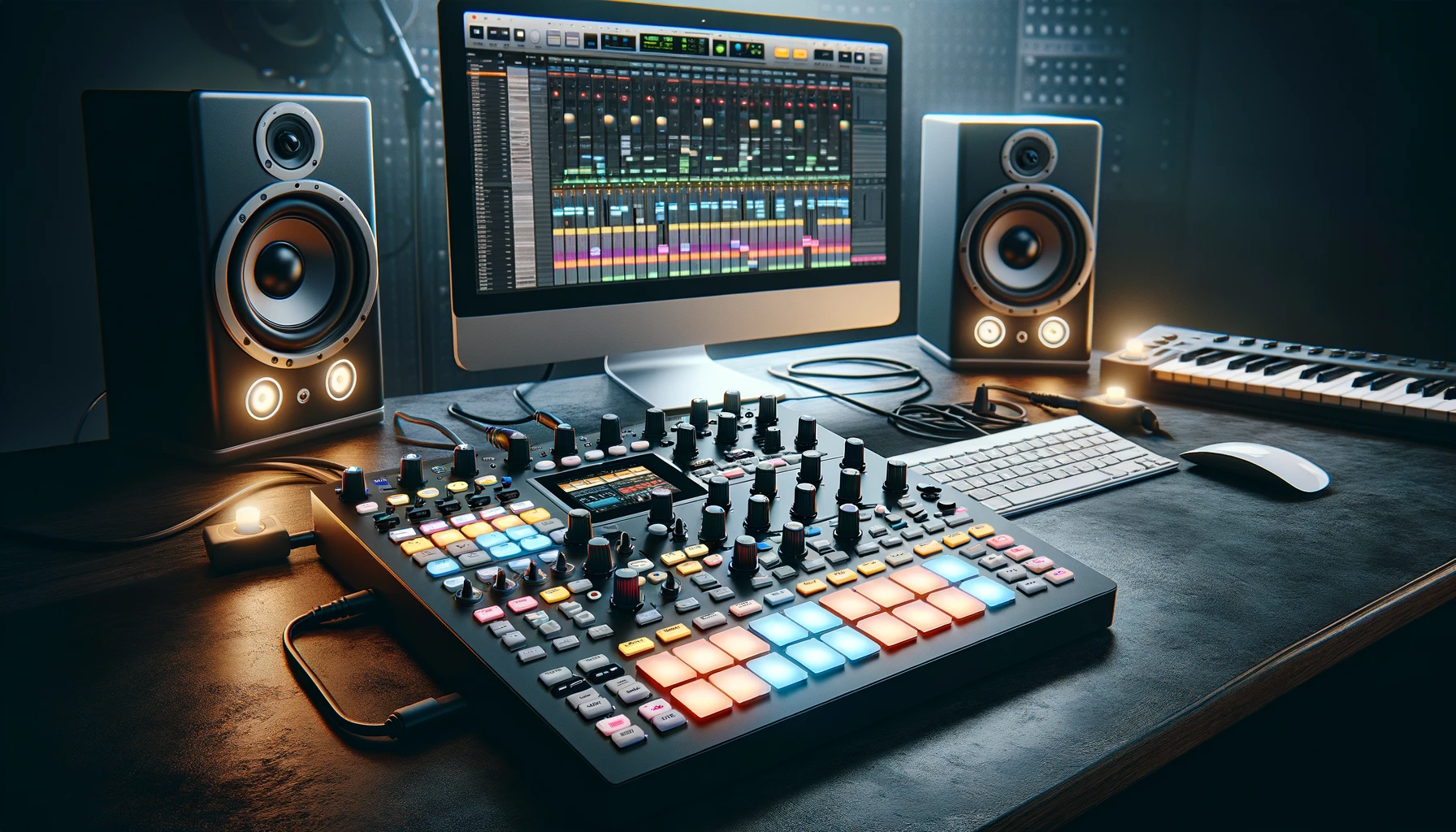With its pads, knobs, and buttons does Maschine by Native Instruments excel beyond its core beatmaking capabilities into the realm of serious MIDI control?
Yes – both the Maschine MK3 and Maschine+ hardware make for versatile, intuitive MIDI controllers to manipulate instruments and effects across various music software.
Let’s explore how these Maschine units connect, assign controls, and integrate into any modern production setup.
Yes, Maschine Can Be Used As A MIDI Controller – Here’s How
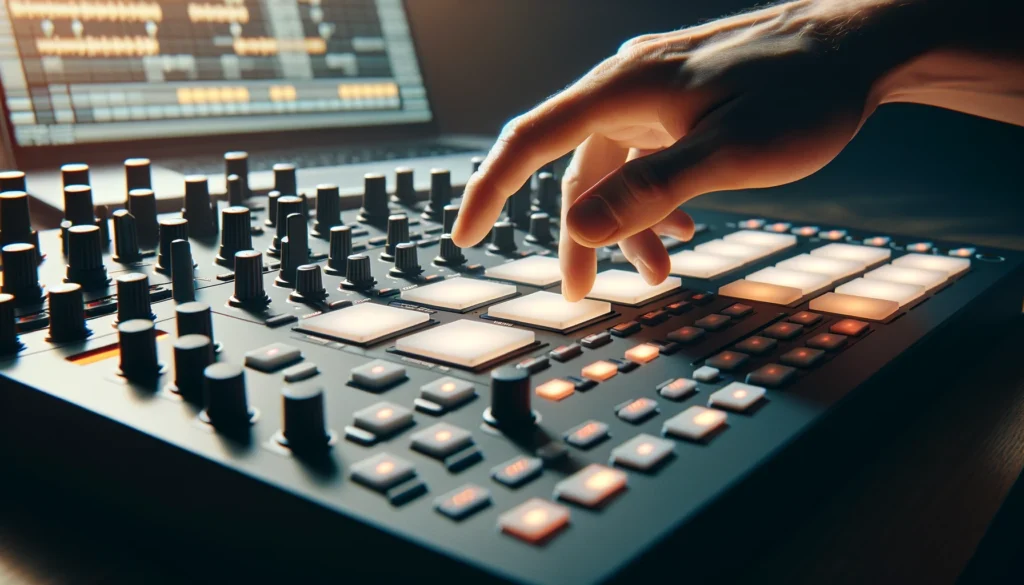
Can Maschine hardware be used as a MIDI controller? Yes it can.
The Maschine MK3 and Maschine+ units have full MIDI controller capabilities for controlling external software instruments, DAWs, and hardware when connected via USB.
We’ll explore using Maschine for MIDI control in more detail below.
But in short – it works great!
Now, let’s dive in and learn more about setting up and mapping Maschine for MIDI…
What is Maschine?
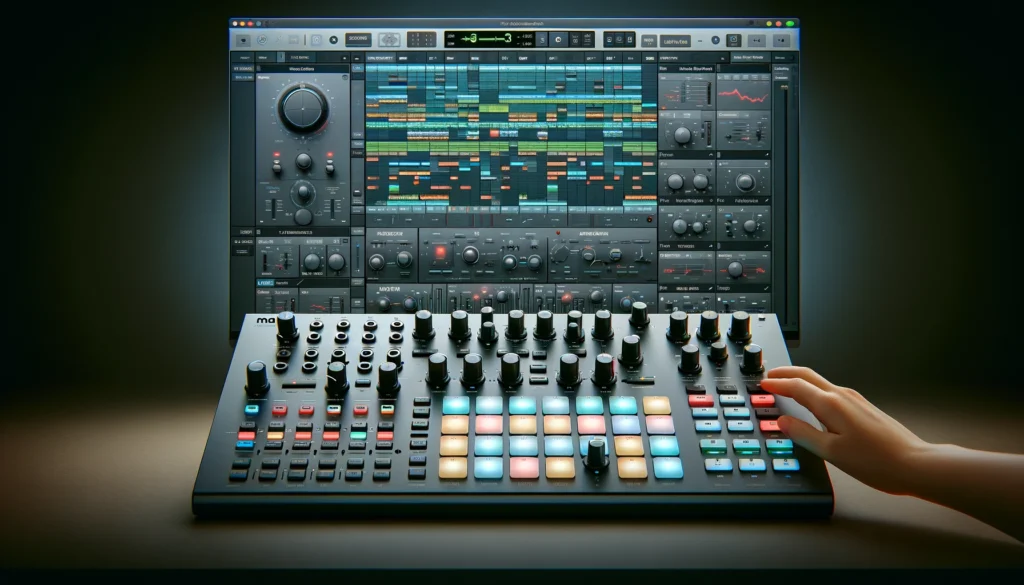
Maschine is a music production system originally developed by Native Instruments.
The system includes both hardware controllers as well as software for sequencing, sampling, and applying effects.
It has become very popular for beat making, hip-hop, and electronic music production.
The Maschine hardware controller serves as a physical way to interact with, control, and record using Maschine’s software features.
There is a variety of different hardware units – the Maschine Studio, Maschine Mikro, Maschine MK1, Maschine MK2, and most recently Maschine MK3 and Maschine Plus.
They contain 16 color-sensitive, velocity sensitive pads, as well as knobs, buttons, and displays to visually see software parameters.
The colors, pads, and displays similar to those found on MIDI controllers, making them ideal for the controllerism.
Maschine can act as a standalone beat maker, sequencer, and sampler.
However it can also be connected to a computer running a digital audio workstation (DAW) software.
This allows integration as a powerful plug-in instrument or MIDI controller inside your DAW.
Connecting Maschine as a MIDI Controller
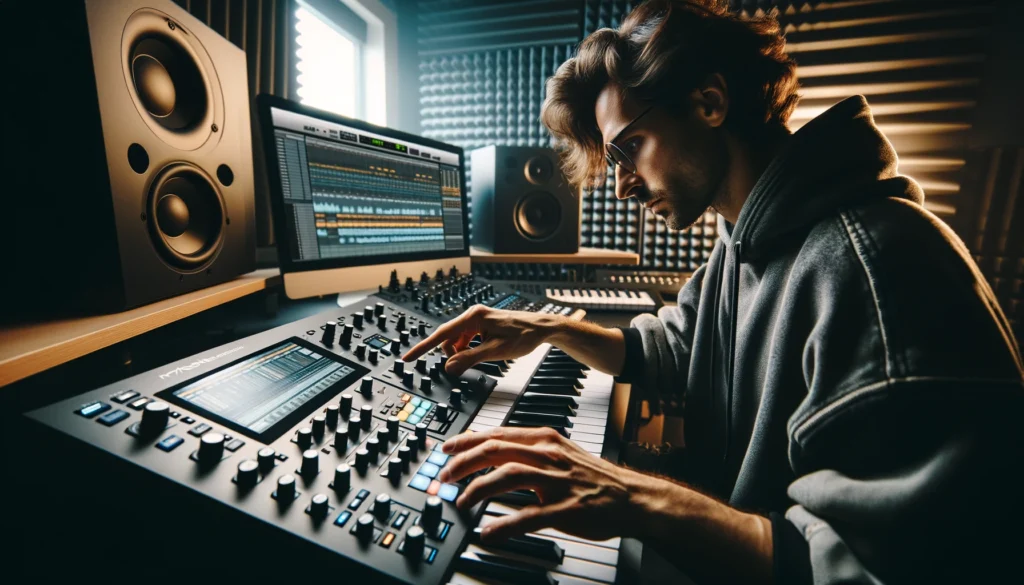
The Maschine MK3 and Maschine Plus hardware units have the capability to function as full MIDI controllers.
You have a few different options to connect them and use them to control other software.
The most common method is to connect it to a computer using a standard USB cable.
Using the USB connection, the Maschine will send and receive MIDI data to and from your computer, which allows it to control any MIDI compatible software or hardware device.
You only need a single USB connection for this as it handles both the data transfer as well as the power.
In the Maschine software preferences, you must enable the MIDI mode.
This switches the controller from controlling the internal sounds to mapping the controls externally and transmitting MIDI information.
The pads, knobs, buttons and faders can all be freely assigned and mapped to any parameters in your external instruments or effects.
This allows for full bi-direction control as you can adjust them physically on your Maschine unit and will simultaneously see the changes happen on your plugins or hardware.
This applies for both pre-mapped control surfaces as well as creating your own custom mappings.
Mapping Maschine Controls to External Devices

As mentioned previously, when using the Maschine controllers in MIDI mode, you are given extensive flexibility when mapping the pads, knobs, buttons, and faders to parameters in your plugins, instruments, or external gear.
Virtually any control on your Maschine can be mapped to one or multiple targets.
For example, you may want to sequence some drum instruments.
Instead of loading a drum software instrument directly into the Maschine plugin, you could alternatively load a third-party drum plugin into your DAW.
Then from Maschine’s MIDI assignment area, you would map each of the 16 pads to trigger a different pad or articulation point in your drum plugin.
The great benefit here is leveraging the excellent sensitivity and response of the pads for drumming.
Similarly, the various knobs and faders on your Maschine unit could be mapped to filter cutoffs, effect intensities, synth envelope or LFO parameters, or more.
You could map the 4-directional push encoder to swiftly adjust the pitch, attack, or other parameters of the currently selected sound.
All assignments take place visually in the controller editor software, so you can both perform and monitor changes in real time.
And they can be customized on a per-plugin basis tailored for your specific instruments and effects.
Advantages Over Traditional MIDI Controllers
While there are many dedicated and specialized MIDI keyboard and pad controllers available, Maschine units offer some unique advantages.
The Maschine MK3 combines both pads and various buttons, knobs, and faders into a single versatile controller, ideal for manipulating software devices or external MIDI gear.
The velocity sensitive, colored pads lend themselves extremely well to playing and recording drums, melodic instruments, or clips – better than flat buttons on most MIDI keyboards.
The sensitivity can be adjusted via the software as well.
There are endless buttons, knobs, and faders to tactilely control instruments and effects.
The displays always show context specific parameters names and values for the knobs/sounds currently selected.
The integration with NI’s own library of quality instruments and effects like Kontakt, Guitar Rig, and Reaktor allows quick sound browsing and preset selection right from the hardware.
Useful when using Maschine inside its own plugin environment. Lastly there are advantages compared to using only a mouse for manipulating plugins.
The hands-on tactile control lends to faster workflows, more expression, and better performances when playing instruments or manipulating effect parameters.
Workflows for Using Maschine as a MIDI Controller
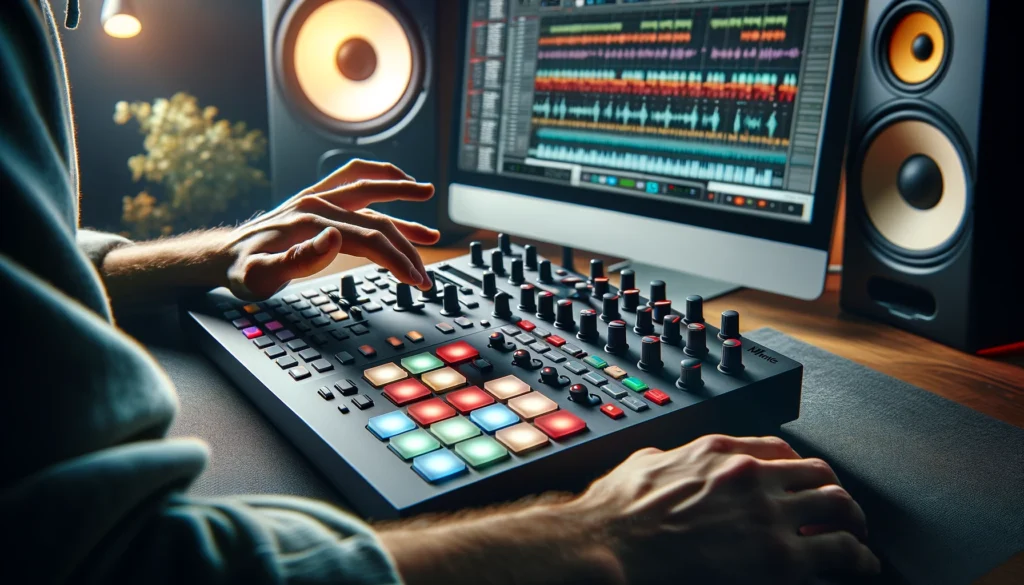
Typically you would add an instance of the Native Instruments Maschine plugin in your DAW session.
The USB connected Maschine unit will automatically connect and be available as a controller.
From there you have some workflow options:
First is to sequence patterns, sounds, and arrangement directly inside Maschine.
the audio is routed from the Maschine plugin out into your DAW where you could apply additional effects.
This is good for sketching out ideas quickly leveraging Maschine’s fast sequencing workflow.
Alternatively, you can add or record-enable MIDI tracks in your DAW and route their MIDI output into instruments/effects in the Maschine plugin.
This way you sequence in your DAW but control the sound sources directly from Maschine.
Lastly, as discussed previously, You might add all your instruments/effects directly in your DAW, and route Maschine’s MIDI out to them.
You sequence in the DAW timeline, but use Maschine for controlling parameters, recording performances, playing virtual drums etc.
The benefit of Maschine’s versatility is that you can combine and blend these workflows to maximize creativity and efficiency as needed on a per-project basis.
Using Maschine as both a sound source via its plugin, and a MIDI controller over other instruments provides the most flexibility.
Conclusion
Maschine continues to prove itself as more than just a beat sketchpad, going beyond its sampling and sequencing roots by integrating as a MIDI controller.
Musicians can tap into its excellent responsive pads, buttons, knobs, and displays to creatively manipulate instruments and effects from any vendor.
It has become production Swiss Army knife in the studio.
We likely will see even deeper MIDI and parameter mapping functions added to Maschine’s roadmap making it an even more powerful MIDI controller.
But it already integrates wonderfully today into any modern production workflow.
